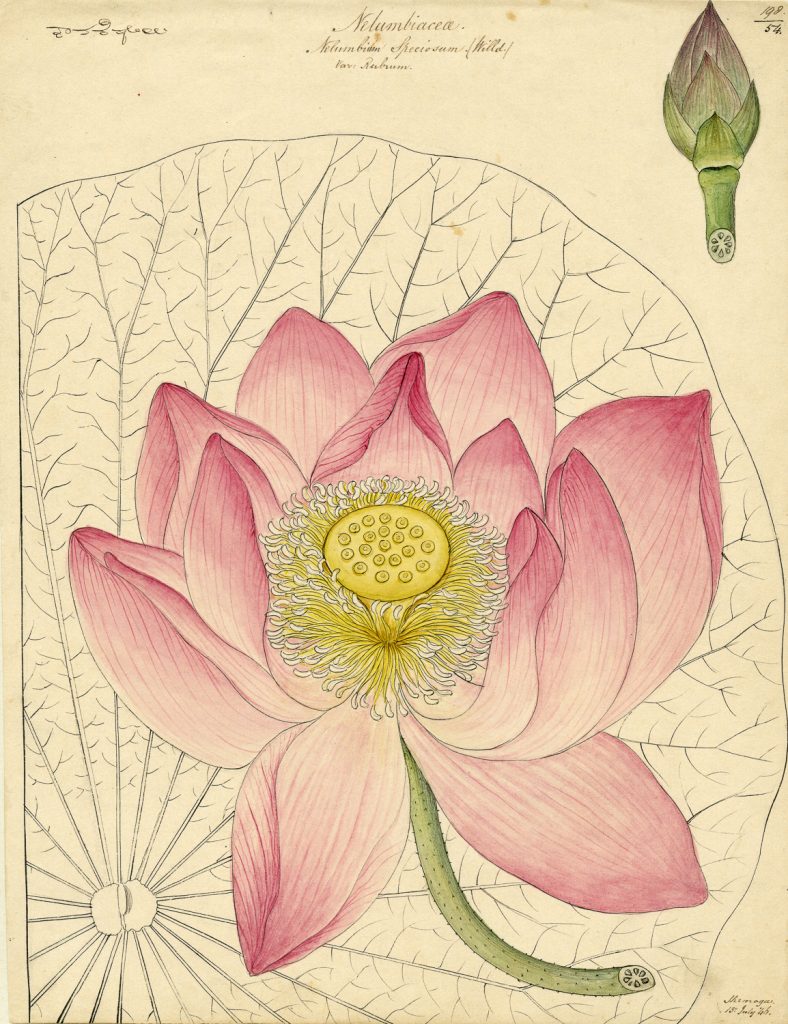22. Nelumbo nucifera Gaertner NELUMBONACEAE
Sacred lotus, Egyptian Bean; Hindi: kamal, कमल
This aquatic plant is important in Buddhist, Jain and Hindu iconography. The beautiful flower (which can be white or pink) that rises from the muddy water of ponds and lakes is seen as a symbol of purity. It is said to have arisen from the navel of Vishnu, and its thousand-petalled flower to serve as a throne for the god Brahma. It is native in South-East Asia from where it was introduced to Egypt in ancient times. Its seeds, which are perhaps the longest lived of any flowering plant, are able to germinate even after several hundred years. In China the rhizomes, which are beautifully patterned with air spaces, are eaten as a vegetable. Analysis of the lotus’s DNA has revealed the extraordinary fact that its closest relation is not the waterlily with which it shares this pool, but the plane tree that grows outside the glasshouse (Platanus orientalis, Number 38 of the Trail).

